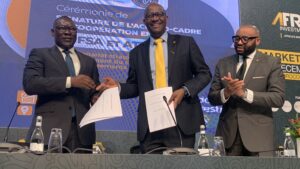During an interview on an internet TV news outlet Professor Mthuli Ncube, Zimbabwe’s minister of finance and economic development could scarcely conceal his joy at the arrival of special drawing rights allocated to Zimbabwe by the International Monetary Fund (IMF).
This was a part of the US$650 billion the multilateral financial institution is injecting into the global economy to cushion it against the economic shocks inflicted by the coronavirus pandemic.
The treasury chief went on to table his plans for the windfall provided by the financial institution which will involve expenditures resting predominantly on four pillars namely social, productive, infrastructure and reserves.

Zimbabwe has had a tumultuous relationship with external creditors over the last two decades characterized by long outstanding loans with some estimating the quantum of debt owed to external creditors to be north of US$10 billion.
Economic isolation in a manner of speaking, together with low industrialization, reduced activity in the formal sector, foreign currency shortages, intermittent power supplies, high unemployment have all had the impact of leaving substantial sectors of the economy comatose.
This background makes the allocation of Special Drawing Rights (SDRs) from the IMF to the capital-starved nation especially momentous.
SDRs are a reserve asset created by the International Monetary Fund (IMF) to supplement its member countries’ reserves.
According to the IMF’s website, a total equal to US$943 billion in SDRs has been allocated to date from the time they were created in 1969. This figure is inclusive of the SDR456 billion approved on the 2nd of August 2021. This most recent allocation was made necessary by the need to help countries around the world to cope with the effects of the COVID-19 pandemic. The value of the SDR is based on a basket of five currencies which include: the US dollar, the euro, the Chinese renminbi, the Japanese yen, and the British pound.
The last time that the IMF had extended this kind of financial support was in 1999.
Officials at the treasury were upbeat in their tone about the prospects of Zimbabwe’s economy. The economy is said to be stabilizing after recording what officials called a bumper harvest, a stable exchange rate and expected growth in the economy to be 7.8%. Zimbabwe has also had a poor record of inflation.
It experienced the highest rates of inflation in history in 2008 before the local currency then became defunct at which point the nation opted to use a basket of foreign currencies led predominantly by the US dollar. The country experienced hyperinflation for the second time in a decade when it reintroduced its local currency which immediately started to lose value against major currencies. The monetary authorities expect inflation to be in the region of between 22% and 35% by year-end 2021.
The disbursement of funds by the IMF while celebrated immediately raised concerns from the broader population about how the money would be used. The concerns are not unfounded. The country has a very sketchy record when it comes to corruption and its prosecution by the authorities. To this, the finance minister gave assurances that the funds would be prudently used and with the utmost accountability. It was at this point that the treasury boss outlined priority areas of focus like health and education, supporting the productive sector, mining, agriculture, infrastructure, and housing sectors as well as the building up of foreign exchange reserves.
On the social front
The areas of focus on the social front include expenditures to purchase more vaccines with the aim to achieve herd immunity although no definitive date has been given by which herd immunity will be realized. Health is another priority area that has been earmarked for funding. Zimbabwean hospitals have been reported to be in desperate need of equipping and funds from SDRs will be used in this respect. In terms of education, the treasury expressed a desire to build boarding schools in all the provinces of Zimbabwe especially in the rural areas. The object of this decision according to the finance minister is to build hard infrastructure.
The government through the finance minister also recognized the need to provide social security safety nets for the masses given the high rates of unemployment obtaining in the country and the high number of vulnerable members of society and proposed a scheme that includes among others, food for work. A portion of the funds allocated to the southern African country will be spent in this area. The funds according to the treasury would not be used to pay wages as this would not be productive.
In the productive sector
The priority areas here specified by treasury include mining, manufacturing, and agriculture. The government explicitly made the point that no actual funds would be spent in this area but rather treasury would work with the banking sector to structure funding mechanisms to provide credit to private players to meet their needs.
The government would merely provide cash cover and initiate a revolving fund which would provide credit to those in need of it and their repayments would then provide funds for other players in need of capital.
In the agriculture space, the government expects to provide support to revive horticulture in Zimbabwe and it is envisaged that it will be a critical foreign exchange earner among other subsectors of the agriculture sector. Additionally, the government expects to climate-proof the agriculture sector which for a long time has been reliant on rainfall and is possibly the biggest reason for the less than average output of agricultural production over the years. Irrigation is an obvious no-brainer and it will be given priority to harness the vast water resources the country has.
Manufacturing
Zimbabwe’s industrial capability and capacity are very antiquated from many years of under-investment and lack of investment in its development. This phenomenon is especially pronounced in what has been described as the lost decade from 1999 to 2009. From the end of that period to date investment in the development of the said industrial capacity in terms of retooling has also been lacklustre hence the allocation of funds from the IMF to this sector.
The manufacturing sector is strategic and key to the economic revival of the nation. Treasury made it clear during discussions about how SDRs will be used that in the long run it is not economically sustainable for the country to only produce raw natural resources and sell them with no value addition while buying finished and value-added products from other countries.
Value addition occurs in a country’s manufacturing sector and it also enhances the country’s ability to earn foreign exchange.
Zimbabwe’s missing manufacturing sector is also one of the reasons the country has struggled with perennial foreign exchange shortages because it is heavily reliant on imports.
Also read: Kenya, Zimbabwe and South African IT leaders accelerate cyber security: report
The nation’s economy is largely agrarian and mineral-based. All of what is produced is sold with no value addition which means that the country does not fully appropriate value it could if the natural resources it produces were beneficiated through a manufacturing sector that added value to them.
This problem is further compounded by the fact the minuscule industrial activity that takes place in the country depends on imported raw materials. According to the Confederation of Zimbabwe Industries, 70% of inputs needed in the production of Zimbabwean goods are imported. These factors have adverse implications for the country’s ability to meaningfully generate and manage its foreign exchange reserves.
To that end, the treasury said that it would be creating a revolving fund like the proposed one for agriculture. Again in this area the minister of finance expressly stated that there would be no cash expenditures; however, the treasury would work together with banking houses to provide cash cover and to open up lines of credit to players in the industry to fund their operations.
One area the minister seemed keen to support is garment manufacturing reasoning that it was not sustainable for the country to carry on exporting raw cotton while importing finished cloth.
The mines
The mining sector has for years been an economic bellwether for Zimbabwe. It has enormous potential to transform the country and the treasury chief acknowledged this fact. SDR allocation in this sector is targeting small scale and artisanal miners who Government says are responsible for 60% of gold production and are also inadvertently responsible for leakages and smuggling of the precious metal. Artisanal miners have always lamented their lack of capital with which to purchase capital equipment for their mines. They will be receiving funding through lines of credit which will be guaranteed by the government.
Infrastructure
This is critical to a well-functioning and thriving economy. Where there is no infrastructure an economy struggles. Studies have shown that where infrastructure is well developed and continues to develop poverty is reduced. The minister of finance in his presentation affirmed this notion from research he conducted during his time in academia.
The government will allocate resources to the construction of roads and housing to enable intra-country trade. And in terms of housing, Professor Ncube made it known that he would be deploying resources for the development of housing in the Mount Hampden area which will be the new capital city of the country together with urban housing in townships like Mbare in Harare, Sakubva in Mutare and Makokoba in Bulawayo.
Finally, reserves…
The government will not be converting the entire US$961 million allocated to it by the IMF. A portion of it will remain with the IMF and will count as reserves for the country. The rationale behind this stance is that doing this should support the value of the local currency and give it some much-needed stability and credence.
In conclusion
Zimbabwe is a country that is in serious need of financial support to revive and support its economy therefore the allocation of SDRs by the IMF was welcomed by all people right across the political divide.
There are lingering concerns, however, given the corruption that the funds may not be used for purposes for which they are intended as has occurred in the past with the country’s own resources. Whether the assurances provided by the treasury chief are successful in allaying these fears will be shown from the local currency’s official exchange rate and perhaps to a larger extent parallel market rate.
The official rate has been somewhat static at ZWL$86 whereas the parallel rate is nearly double in the region of ZWL$160.
The success of the finance minister’s plan of expenditure depends on the multiplier effect…which is the ratio of change in national income arising from a change in government spending. More generally, the exogenous spending multiplier is the ratio of change in national income arising from any autonomous change in spending. The expenditures by the government of the funds availed by the SDR allocation are envisaged to lead to higher economic output.
Government expenditure is directed deliberately at those sectors it envisages will spur productivity in the long run. What is also clear from the government is that these funds will not be used for consumptive purposes. The southern African nation is in for good times ahead…all things held constant…time will tell.










